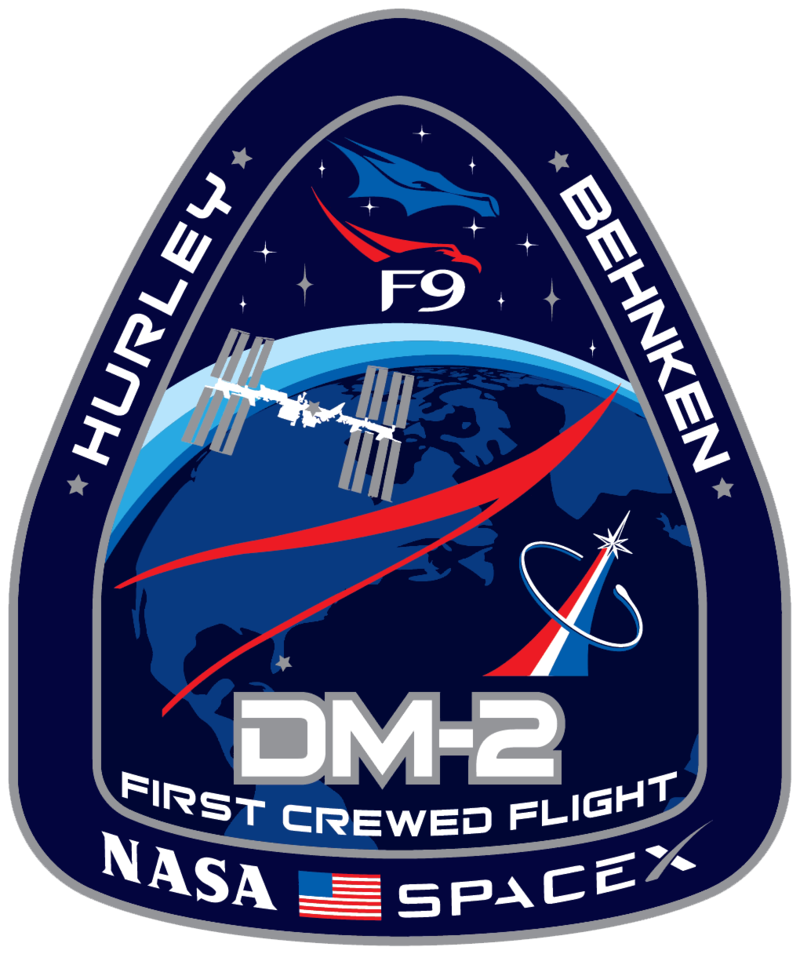SpaceX Falcon9
SpaceX Falcon 9
Falcon 9 is a partially reusable, human-rated, two-stage-to-orbit, medium-lift launch vehicle designed and manufactured in the United States by SpaceX. That says wikipedia. Let's go deeper into it.
Falcon 9 is a reusable, two-stage rocket designed and manufactured by SpaceX to transport of people and payloads into Earth orbit and hopefully beyond. Falcon 9 rocket is the first orbital class of reusable rocket that flies to ISS and other private programs. It helps to reduce to price and cost of the flight of the rocket, as it is used again for the next plan helping the space game open to broader context.
The first Falcon 9 launch was on 4 June 2010, and the first commercial resupply mission to the International Space Station (ISS) was launched on 8 October 2012. In 2020, it became the first commercial rocket to launch humans to orbit to ISS.
The height of the Falcon 9 is 70 m and diameter is 3.7 m. Mass is 549,054 kg.
The rocket has two stages. The first (booster) stage carries the second stage and payload to a pre-determined speed and altitude, after which the second stage accelerates the payload to its goal orbit. The booster is capable of landing vertically to facilitate reuse. This feat was first achieved on flight 20 in December 2015. As of 28 September 2024, SpaceX has successfully landed Falcon 9 boosters 338 times. Individual boosters have flown as many as 23 flights. Both stages are powered by SpaceX Merlin engines, using cryogenic liquid oxygen and rocket-grade kerosene (RP-1) as propellants.
Falcon 9 is a two-stage rocket designed and manufactured by SpaceX. It transports satellites and Dragon to the Earth's orbit. In order to protect the satellites on the way to the orbit they are covered by the carbon composite material fairing. The fairing is jettisoned about 3 minutes into the flight. Those fairings are usually recovered to be used again in the next mission.
 |
| SpaceX Merlin 1A, Source: Wiki |
Falcon 9 generates more than 7,607kN of thrust at sea level and 8,227kN of thrust in vacuum.
The first (booster) stage carries the second stage and payload to a predetermined speed and altitude, after which the second stage accelerates the payload to its target orbit. The booster is capable of landing vertically to facilitate reuse. Falcon 9's Interstage is a composite structure that connects the first and second stages, and houses the pneumatic pushers that allow the first and second stage to separate during flight. Falcon 9 is equipped with four hypersonic grid fins positioned at the base of the interstage. They orient the rocket during reentry by moving the center of pressure.
 |
| Here are the Falcon9 grid fins. source: Grid Fins & Rocket guidance (spaceandscience.fr) |
Grid fins (or lattice fins) are a type of flight control surface used on rockets and bombs, sometimes in place of more conventional control surfaces, such as planar fins. They were developed in the 1950s by a team led by Sergey Belotserkovskiy. Grid fins have also been used on specialized devices such as part of the launch escape system for the Soyuz spacecraft.
In 2014, SpaceX tested grid fins on a first-stage demonstration test vehicle of its reusable Falcon 9 rocket, and on December 21, 2015 they were used during the high-velocity atmospheric portion of the reentry to help guide a commercial Falcon 9 first stage back to land for the first successful orbital booster landing in spaceflight history.
The second stage of Falcon 9 is powered by a single Merlin Vacuum Engine, delivers the payload to the Earth's orbit. The second stage engine ignites a few seconds after stage separation. They can deliver multiple payload to different orbits on the same flight. The second stage Merlin engine generates 981kN of thrust in vacuum.
Payload is either satellites covered by the fairing or Dragon, which is capable of delivering up to 7 astronauts to the space.
I guess that the most notable mission was the Crew Dragon Demo-2 test flight. The spacecraft got the name Endeavour, and it was launched on 30 May 2020. Falcon 9 carried NASA astronauts Doug Hurley and Bob Behnken to the International Space Station. It was the first crewed mission from US since the last Space Shuttle mission in 2011. Also it was the first private operated mission by SpaceX.
 |
| Patch of the Crew Dragon Demo-2, source: Wiki |






Comments
Post a Comment